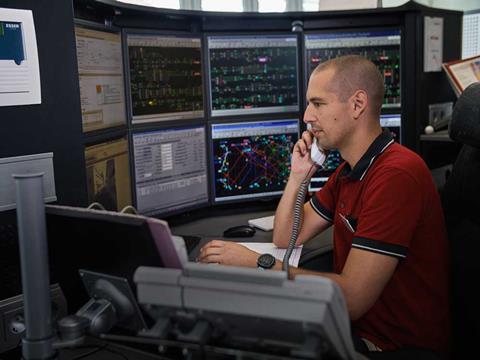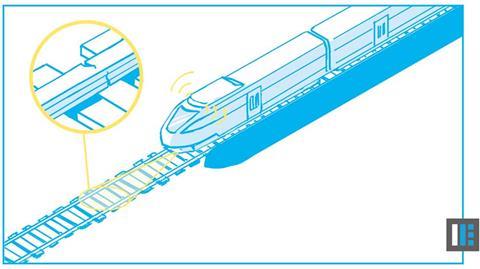Frequentis to bring train and track together leveraging IoT to improve predictability, safety, and incident handling. Could railway asset monitoring reduce operating costs?

As a carbon efficient mode of transport, demand for rail travel is high for both commuters and the transport of goods. Railways must keep up with technology advances that support the cost effective running of the service to ensure railway performance is meeting expectations for on time services, improved safety, and ride quality, all while considering cost savings for railway operators. Real-time information sharing is key for effective incident handling and keeping passengers moving, but what else to we need to enable prediction and prevention?

Common Operational Picture
In the event of an incident on the railway the time taken to resolve it is key; the best way to manage any incident is for all stakeholders to work together and coordinate. By sharing information across the entire national network, linking assets and communicating in real-time, a common operational picture is created. Frequentis achieves this with its event management Software as a Service (SaaS) tool to monitor and compute a wide variety of sensor data which is capable of handling any kind of occurrence and predicting the operational consequences. The software is a highly effective decisionmaking support tool, sharing real-time information and communicating critical information seamlessly with other systems and users on the network.

Such a software solution is already providing benefits for CFL Luxembourg and Austrian Federal Railways (OBB), coordinating maintenance crews, defining responsibilities, and logging all relevant incident information, including media recordings and imagery. OBB confirmed the solution makes the role of the operator less resource intensive, which in turn is reducing the impact on journeys and enabling a more reliable and punctual train service. But, as well as reactive incident management, can real-time asset condition information also be integrated into the solution?
Intelligent asset monitoring
Railway maintenance and renewal costs rise year on year with track maintenance being one of the biggest costs. Regular rough spots on track are currently identified and reported by drivers, which follows with a manual inspection of the track, by engineers, along with the deployment of dedicated measurement vehicles. This is labour-intensive and comes with high-cost implications, estimated as around 50,000 euros per kilometre of track, as well as the obvious risks posed by placing crews trackside on live operational railways. For this reason, Frequentis has been investigating intelligent, data driven methods for proactive monitoring of assets and infrastructure. One project is the HARMONY project (Human-Assisted Real-time MONitoring of infrastructure and obstacles from railway vehicles), with Austrian Research Promotion Agency (FFG), Mission Embedded, Frequentis Control Room Consulting and Institute of Computer Technology, proposes the use of sensors and artificial intelligence (AI) to detect irregularities on railways, in addition to and in support of the precise but infrequent and often cost-intensive measuring vehicles. The aim is to be responsive to any track issues at an early stage to prevent significant damage and avoid potential accidents. Fitting sensors to regular trains mean that monitoring can be carried out while a train is on its regular route, reporting the condition of track more frequently and giving operators a clearer real-time view of asset condition. Artificial intelligence will automatically detect and report anomalies on tracks, track beds, and switches so that potential hazards such as track breaks, track damage, or objects are detected at an early stage.

By additionally feeding this type of data to the decision-making support tool the common operational picture is further enhanced, supporting operators to make informed decisions on maintenance activities and its impact to operations. The investment in planning immediate maintenance work based on reliable data decreases operational costs compared with work as a consequence of an accident arising from an overseen (or not recognised) track defect. The Frequentis event management system has the ability to work in the prevention phase as well as how to handle incidents in the recovery phase.
Leveraging sensor data
At Frequentis we have also been exploring how to leverage this sensor data and integrate it into the decision-making support tool to provide real-time asset condition information to operators. Frequentis is also working on a drone surveillance research project, integrating aggregated sensor data from UAVs (Unmanned Aerial Vehicles) and UGVs (Unmanned Ground Vehicles) to protect the public against potential Chemical, Biological, Radiological and Nuclear attack. GPS data from drones will allow operators to see threat locations and react accordingly, including deploying troops, supporting the decision-making processes. A direct video livestream from the UAVs and UGV will be integrated into event management solution to provide the event management on-scene perspective and optimise strategical planning. What is important in all cases is the quality of sensor data, and its systematic analysis (e.g pattern recognition), for it to be turned into actionable data to improve operational or strategic decisions about when to perform asset maintenance or give a lowspeed instruction, for example. Easy and intuitive usability of the system requires the ability to visualise sensor data, configure thresholds and bring the sensors into context, for example the level of vibration which may flag up a track defect compared to an obstacle on the track. What we are talking about is a railway Internet of Things (IoT) sensor network, which will efficiently share information on track changes during normal operation, saving railways significant investment costs on reactive maintenance. Investment in the prevention phase will pay off in the recovery phase.
About Frequentis
Frequentis is an international supplier of communication and information systems for control centres with safety-critical tasks, leveraging 75 years of cross-domain experience in aviation, defence and transport. The company also holds the number one market share in GSM-R dispatcher terminal positions; more than 8,000 units are currently deployed in customer control centres in over 25 countries. Railway customers include UK Network Rail, German Deutsche Bahn, Austrian ÖBB and Wiener Linien, and Australian Sydney Trains.
https://www.frequentis.com/en/public-transport
About the author
Christian Stimakovits is an experienced operational management professional with over 20-years spent in control room solutions and management. He is responsible for the Frequentis Incident and Crisis Management portfolio, including IoT and remote condition monitoring.

















